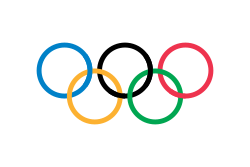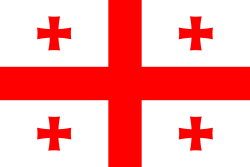Andrej Tjemerkin
| Andrej Tjemerkin | ||
| Tyngdlyftning, herrar | ||
| Nation: | ||
|---|---|---|
| Brons | Sydney 2000 | +105 kg |
| Guld | Atlanta 1996 | +108 kg |
| Världsmästerskap | ||
| Brons | Antalya 2001 | +105 kg |
| Guld | Aten 1999 | +105 kg |
| Guld | Lahtis 1998 | +105 kg |
| Guld | Chiang Mai 1997 | +108 kg |
| Guld | Guangzhou 1995 | +108 kg |
| Silver | Istanbul 1994 | +108 kg |
| Brons | Melbourne 1993 | +108 kg |
| Europamästerskap | ||
| Silver | Riesa 1998 | +105 kg |
| Guld | Warszawa 1995 | +108 kg |
| Guld | Sokolov 1994 | +108 kg |
| Silver | Sofia 1993 | +108 kg |
Andrej Ivanovitj Tjemerkin (ryska: Андрей Иванович Чемеркин), född 17 februari 1972 i Solnetjnodolsk i Stavropol kraj i Ryska SFSR, är en rysk före detta tyngdlyftare. Han vann en guldmedalj i supertungvikt vid olympiska sommarspelen 1996 i Atlanta och en bronsmedalj vid olympiska sommarspelen 2000 i Sydney.[1][2]
Tjemerkin tog också fyra guldmedaljer vid världsmästerskapen 1995, 1997, 1998 och 1999.[3] Han satte nio världsrekord mellan 1994 och 1997 och blev invald i det internationella tyngdlyftningsförbundets Hall of Fame 2010.[4][5]
Källor
- ^ Andrey Chemerkin Bio, Stats, and Results. Arkiverad 17 april 2020 hämtat från the Wayback Machine. Sports Reference. Läst 13 november 2017.
- ^ Andrey CHEMERKIN. Internationella olympiska kommittén. Läst 13 november 2017.
- ^ Weightlifting Database. Chemerkin Андрей Иванович Чемеркин Andrei. International Weightlifting Results Project. Läst 13 november 2017.
- ^ Weightlifting Hall Of Fame - List Of Members. International Weightlifting Federation. Läst 13 november 2017.
- ^ Andrey Chemerkin @ Lift Up Hall of Fame. Lift Up. Läst 13 november 2017.
| |||||||||||||||
Media som används på denna webbplats
De olympiska ringarna, med genomskinlig bakgrund.
Olympic Movement flag
Proportions 2:3, created 1913, adopted 1914, first used 1920.
- Colors as per http://fairspielen.de/wp-content/uploads/2015/09/Annexe-3-Olympism_and_the_Olympic_Symbol_-_Principles_and_Usages_Guide-1.pdf
- blue: PMS 3005C
- yellow: PMS 137C
- black: PMS 426C
- green: PMS 355C
- red: PMS 192C
- Dimensions of the rings taken from http://fairspielen.de/wp-content/uploads/2015/09/Annexe-3-Olympism_and_the_Olympic_Symbol_-_Principles_and_Usages_Guide-1.pdf
Flag of Iran. The tricolor flag was introduced in 1906, but after the Islamic Revolution of 1979 the Arabic words 'Allahu akbar' ('God is great'), written in the Kufic script of the Qur'an and repeated 22 times, were added to the red and green strips where they border the white central strip and in the middle is the emblem of Iran (which is a stylized Persian alphabet of the Arabic word Allah ("God")).
The official ISIRI standard (translation at FotW) gives two slightly different methods of construction for the flag: a compass-and-straightedge construction used for File:Flag of Iran (official).svg, and a "simplified" construction sheet with rational numbers used for this file.







